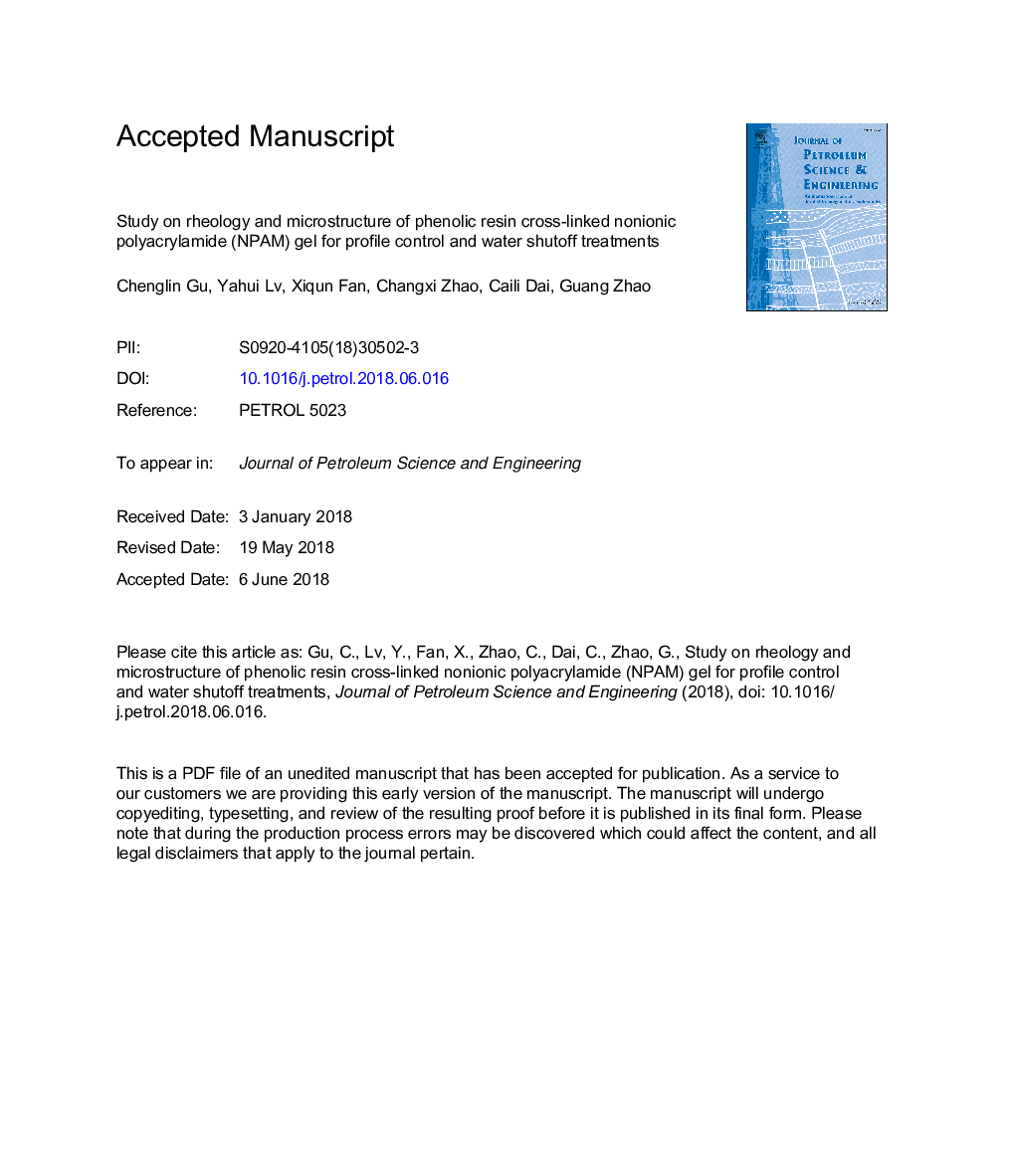| Article ID | Journal | Published Year | Pages | File Type |
|---|---|---|---|---|
| 8124597 | Journal of Petroleum Science and Engineering | 2018 | 36 Pages |
Abstract
Phenolic resin cross-linked polymer gel as a plugging agent for profile control and water shutoff has wide industrial applications. There have been many studies on the gel, but research on the rheology and microstructure has not been systematic. In this study, the rheological properties and microstructure of phenolic resin gel were measured by using a Haake Mars 60 rheometer and a Carl Zeiss Jena cryo-etching electron microscope. Viscosity and viscoelastic moduli of the gel rose constantly and the structure became denser during the gelation process. An increasing polymer or cross-linker concentration increased the viscosity and viscoelastic moduli of the gel. This increase is attributed to a higher polymer concentration contributing to form a stronger membrane structure and a higher cross-linker concentration making the density of the spherical particles higher. The addition of salt and acid affected the stability of the gel. As salinity increased or pH decreased, both the viscosity and viscoelastic moduli of the gel decreased. Combined with the microstructures of the gel systems, this outcome confirmed that salt and acid made the structure of the gel fragile and easily dehydrated. The results showed that phenolic resin gel (gelation temperature: 95â¯Â°C; aging time: 8â¯h) can maintain good stability under a salinity of less than 30,000â¯mg/L or alkaline conditions with pHâ¯>â¯7. This study can help to understand the gelation mechanism of phenolic resin gel and the impact mechanism of various factors.
Related Topics
Physical Sciences and Engineering
Earth and Planetary Sciences
Economic Geology
Authors
Chenglin Gu, Yahui Lv, Xiqun Fan, Changxi Zhao, Caili Dai, Guang Zhao,
